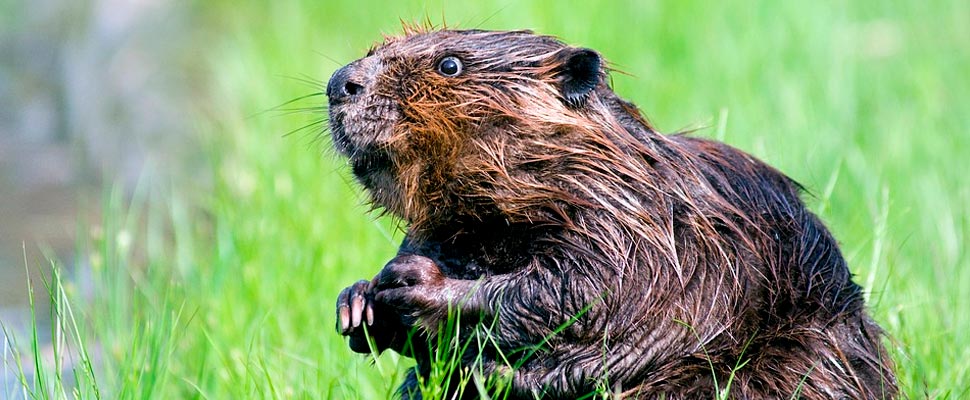Hunting exotic animals to protect the natives?
Killing animals in National Parks seems contradictory, since one of the objectives of protected natural areas is to conserve wildlife .

In some cases it is necessary to reduce the populations of exotic fauna, to protect the native one. / Photo: Pixabay
LatinAmerican Post | Jorgue Guasp
Escucha este artículo
Leer en español: ¿Cazar animales exóticos para proteger a los nativos?
However, in some cases, it is necessary to reduce the populations of exotic fauna, to protect the native one.
Native and exotic fauna compete for natural resources
One of the purposes of the creation of protected natural areas is to preserve populations of native animals, that is, those that develop spontaneously in a region, and are in balance with the environment. In return, there are animals that man has introduced from other places and for various purposes, and that compete with local fauna for resources such as water, vegetation, prey, etc.
Some of these alien species are invasive: they reproduce quickly, and adapt to a wide range of environmental conditions. “ For example, the American beaver (Castor canadensis) is invasive and causes great problems in Tierra del Fuego and Chile, while in its environment of origin it is considered a component that maintains a dynamic of relations with the rest of the components of its ecosystem ”(Didactic Material on Invasive Exotic Species in Argentina, FAO, Secretariat of Environment and Sustainable Development of the Nation, Argentina, 2018). Indeed, the dams built by the beaver, introduced from the Northern Hemisphere, cause significant floods in Tierra del Fuego, which not only deteriorate the forest but also modify the ecological succession, since in those flooded areas different vegetation from the original grows.
In Australia, between 1850 and 1860, the European rabbit and the red fox were introduced for hunting purposes. Since its introduction, the fox has invaded much of Australia; at present it represents a threat to various species of native fauna, mainly marsupials and birds. Rabbits, for their part, pose a threat to the regeneration of native Australian vegetation, as they reproduce very quickly.
According to the Argentine Society for the Study of Mammals (SAREM), the wild boar (Sus scrofa) "is a species that occupies different types of habitats, including marshes, forests, shrubs, mangroves, prairies and swamps. Many times it prefers to be close to a watercourse. They can also use forest plantations, agroecosystems and peri-urban areas (Rosell et al., 2001) ".
In Argentina, the wild boar “was introduced for sport hunting in 1906 in the province of La Pampa, in a large game reserve; later some specimens were taken to fields near Lake Nahuel Huapi. In 1914 many specimens escaped from these preserves and dispersed in various provinces and even invaded some National Parks such as Lanín, Los Alerces and Nahuel Huapi "(Biodiversity Information System, Administration of National Parks of Argentina).
“The Nahuel Huapi National Park is home to a large number of exotic species including large mammals such as wild boar and cow. Both species are widely distributed in the Park and represent a socio-cultural value as a species of sport hunting (wild boar) and as cattle (cow). However, it is known that these species cause negative impacts on native ecosystems, affecting flora, fauna and ecosystem processes ”(Macroscopía Nº6, Year 5, Edition 2015, Nahuel Huapi National Park, Argentina).
Also read: Holes in Greenland ice sheet are larger than previously thought, study finds
Another species introduced in Argentine Patagonia is the red deer. According to the work Ecology, Impact and Management of the Red Deer (Cervus elaphus) in the northwest of Argentine Patagonia, published in the scientific journal Mastozoología Neotropical, 23 (2): 221-238, Mendoza, 2016, “recent studies show that the deer introduced in Isla Victoria, prefer to consume the native tree species, coihue and cypress, to those introduced, ponderosa pine (Pinus ponderosa) and Oregon pine ”(Nuñez et al., 2008)".
Use of firearms to control exotic fauna
In several national parks around the world, firearms are used to control exotic animals. About 20 years ago, in the Kakadu National Park, an Australian World Heritage Site, I participated in the experience of chasing a wild boar in the middle of the forest, until a park ranger shot it down from the vehicle in which we were both traveling.
In El Rey National Park, in Salta, Argentina, park rangers fight wild specimens of cattle with firearms, animals left over from the time when the protected area was a cattle ranch. These wild cattle compete with large native animals, such as the tapir, and also pose a risk to tourism, as bulls often attack visitors. In El Palmar National Park, in the Argentine province of Entre Ríos, invading wild boars are also killed by firearms. In all cases, these activities are carried out within an exotic species control program, which establishes the corresponding protocol and minimizes the negative effects of the tasks.
“It is estimated that in the province of Neuquén there are 30,000 heads of red deer and wild boar. They were introduced to the area in 1922 at the Collun-Co ranch and from that moment on their existence grew dramatically and many animals migrated to the East, entering the Lanín National Park, populating in its entirety. Today, hunting has become one of the mechanisms to control the species, which greatly affects the native fauna and flora of the National Park ”(Lanín National Park, Patagonia Argentina, sport hunting, www.pnlanin.org/caza ).
Eliminate exotic animals to preserve ecosystem life
No sane person wants the death of an animal. However, the ecological functions that govern ecosystems are above certain species, even more so when they do not belong to the natural area in which they are found. Fighting exotic species is not, therefore, an act of cruelty, but an attitude of respect for the laws of nature, thanks to which the planet maintains its harmony.




